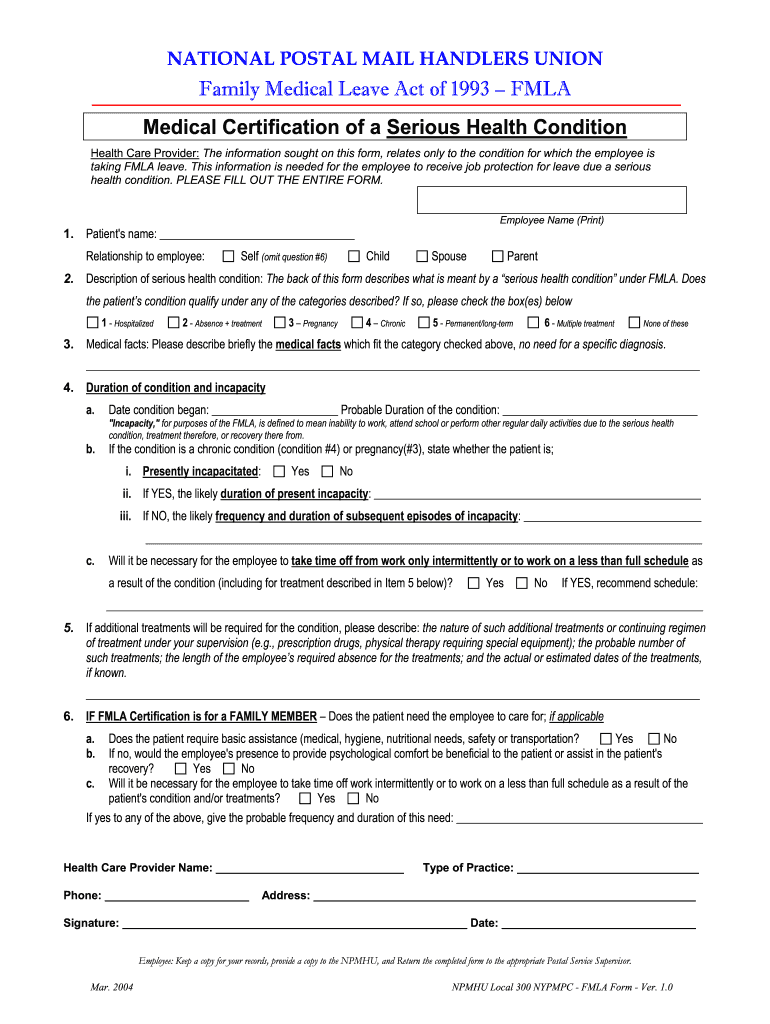5 Steps to Complete FMLA Paperwork Easily

Completing the Family and Medical Leave Act (FMLA) paperwork can seem daunting at first, but by understanding the process and following a structured approach, you can simplify this task significantly. Here are five steps to navigate the FMLA paperwork with ease:
1. Understand Your Eligibility and Rights

Before diving into the paperwork, ensure you qualify for FMLA leave. Here are the eligibility requirements:
- Work for a covered employer: Employers with 50 or more employees within a 75-mile radius are typically covered.
- Have worked for 12 months: You need to have been employed for at least 12 months, not necessarily consecutive.
- Worked a minimum of 1,250 hours: This needs to be within the 12-month period immediately before the start of the FMLA leave.
Under FMLA, employees are entitled to:
- Up to 12 weeks of unpaid leave for serious health conditions, birth or adoption, or care for a family member.
- Job protection, where you can return to the same or an equivalent position upon returning from leave.
- Continued health benefits, as if you were working continuously.
⚠️ Note: Ensure you document your work hours and tenure to confirm eligibility.
2. Gather the Required Documents

FMLA applications require several forms and documentation:
- Form WH-380: Certification of Health Care Provider for Employee’s Serious Health Condition.
- Form WH-380-F: Certification for Family Member’s Serious Health Condition.
- Form WH-381: Notice of Eligibility and Rights & Responsibilities.
- Form WH-382: Designation Notice.
- Your medical records: These might be needed by your healthcare provider to complete the certification forms.
- HR forms: Your employer might have internal forms for tracking FMLA leaves.
Organize these documents in one file or folder for easy access and reference.
3. Communicate with HR and Your Healthcare Provider

Effective communication is key:
- Notify your HR department or supervisor as soon as possible about your need for FMLA leave. Although you have up to 30 days before the leave if it’s foreseeable, early notification helps with smoother coordination.
- Coordinate with your healthcare provider to ensure they understand the need for certification and provide accurate information. This might involve:
- Scheduling a visit or consultation for certification purposes.
- Providing your healthcare provider with the necessary FMLA forms and your consent for release of medical information.
4. Complete and Submit Paperwork

Here’s how to handle the paperwork:
- Review the forms: Ensure you understand what each form requires.
- Fill out applicable sections: Complete parts like personal information, your leave request, and any certifications by your healthcare provider.
- Submit within deadlines: Typically, you have 15 days to return completed forms unless otherwise specified by your employer.
- Keep copies: Retain copies of all forms for your records.
📝 Note: Accuracy in filling out forms is crucial; errors or omissions can delay or complicate your leave process.
5. Follow Up and Keep Documentation

After submission:
- Follow up: Contact HR to confirm they’ve received and processed your paperwork.
- Monitor communications: Keep all correspondence from your employer regarding your FMLA leave.
- Maintain documentation: Keep track of your leave days, medical appointments, and any communication with HR or your employer.
- Prepare for return to work: Discuss with your employer your anticipated return date and any job protection or benefits updates.
By following these steps, you streamline the process of completing FMLA paperwork, reducing potential stress and ensuring your rights are protected. Taking time to understand each requirement, gathering the correct documents, and maintaining clear communication will ensure you benefit fully from the FMLA provisions. Keep in mind that your employer's HR department is there to assist, and don't hesitate to ask questions to clarify any part of the process.
What if my employer disputes my FMLA leave request?

+
If your employer disputes your FMLA request, you have the right to seek assistance from the Department of Labor or legal counsel. It’s also advisable to gather additional evidence or medical documentation to support your case.
Can I take FMLA leave intermittently?

+
Yes, FMLA allows for intermittent leave, where you can take leave in separate blocks of time or reduce your work hours, subject to approval by your employer based on your certification.
What happens if I can’t return to work after FMLA leave?

+
If you’re unable to return to work after exhausting FMLA leave, your employer can fill your position permanently. However, they must offer you the first available equivalent position for which you’re qualified if your condition changes or you recover.